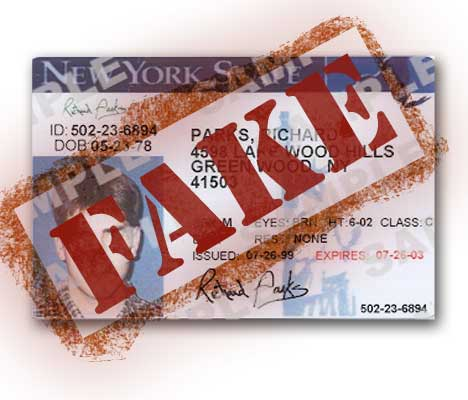Recent Blog Posts
New Wisconsin Bill Gives Retailers and Bar Owners Power to Crack Down on Fake ID Usage
The use of fake Identification to purchase alcoholic beverages is not a new problem in the State of Wisconsin; however it is one in which a new law may change the outlook of Wisconsin bar and liquor store owners. Some Wisconsin law enforcement officials have found that retailers have a low compliance rate with regard to underage drinkers who present fake IDs.
With this problem in mind a Wisconsin Assembly committee recently introduced and passed a bill that would give bar or liquor store owners the ability to sue minor who present fake identification in their establishments with the intent of purchasing alcohol.
The legislation, which will be taken up by the full assembly sometime in May, states that bar or liquor store owners could take individuals cited for underage drinking who purchased alcohol in their establishment to small claims court. Under the law, anyone found guilty of purchasing alcohol with a fake ID is subject to a potential claim of $1,000.
Ask Gimbel, Reilly, Guerin & Brown, LLP: Felony vs. Misdemeanor
 Question: What is the difference between a felony and misdemeanor charge?
Question: What is the difference between a felony and misdemeanor charge?
A crime is a violation of the law that could result in a period of incarceration as a possible punishment. Crimes are considered either misdemeanors or felonies, and of the two, felonies are the most serious that can carry a possible prison sentence. In Wisconsin felonies are classified by a lettering system ranging from a Class A, which is the most serious felony charge and can carry a sentence of life imprisonment, to Class I which is the least serious eighteen months of prison.
In addition to carrying the potential for long prison sentences, felony convictions result in the loss of certain privileges and rights, including the right to vote (until the completion of the sentence) and the right to possess a firearm (lifetime ban). Additionally, felonies typically have to be disclosed to potential employers and other authorities.
Don't Convicted Felons Deserve Second Chances, Too?
Earlier this summer, a GRGB attorney was asked to be an alumni blogger for the MU Law School Faculty Blog. Here is what she had to say in her second blog:
A group of friends and I email each other links to news articles on a regular basis. Sometimes the articles are about interesting, funny, or odd developments. The articles that come to mind recently include the Georgetown law student convicted of running a methamphetamine ring; cat-hoarding;rabid beaver attacks; or this article on therapy llamas. (We have a fun group.) Occasionally we have in-depth back-and-forth discussions about more serious legal topics. By now, two years removed from law school, we have moved to different cities and states and we all practice in different areas of law, which tends to give us very different perspectives on the various topics that pop up.
When Discipline Crosses the Line into Child Abuse
 Recent issues within the National Football League have brought the problem of domestic violence to the forefront of the national conversation. While many of the NFL's incidents have related to spousal abuse, at least one player has been implicated in a child abuse scandal. The player argues that he was merely physically disciplining his child, and that brings up a good question: When does corporal punishment cross over into child abuse in the eyes of Wisconsin law? Unfortunately, there is no clear legal distinction, meaning much will depend on the facts of the individual case.
Recent issues within the National Football League have brought the problem of domestic violence to the forefront of the national conversation. While many of the NFL's incidents have related to spousal abuse, at least one player has been implicated in a child abuse scandal. The player argues that he was merely physically disciplining his child, and that brings up a good question: When does corporal punishment cross over into child abuse in the eyes of Wisconsin law? Unfortunately, there is no clear legal distinction, meaning much will depend on the facts of the individual case.
What Wisconsin Law Says
Wisconsin law makes it a felony to intentionally or recklessly harm a child. The exact penalties for this depend upon the severity of the harm and the intent of the person who caused the harm, but they can be severe. In fact, intentionally causing great bodily harm is a Class C felony, which can involve a fine of up to $100,000 and a prison sentence of up to 40 years. However, Wisconsin Statute 939.45(5)(b), contains an exception to this rule. The law allows “a person responsible for the child's welfare” to use force for the purpose of “reasonable discipline,” which the law does not define more clearly. The only qualifier that the statute places on the idea of reasonable discipline is that it cannot be intended to cause “great bodily harm,” nor can it create an unreasonable risk of great bodily harm to the child.
Understanding Plea Bargains
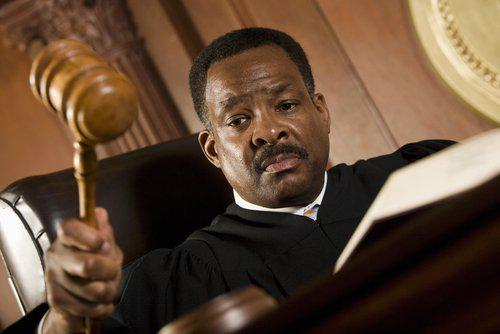 Many people assume that the majority of criminal sentences are issued by a judge after a trial where both sides have had a full opportunity to tell their sides of the story, but that does not happen as often as people think. In reality, the majority of criminal sentences of the United States are assigned by plea bargain rather than by trial. Plea bargains are a lot like settlements in civil cases. Rather than both sides spending the time and money to develop a full trial workup and risking a loss, the two groups, the government and the defendant, negotiate a penalty that both can tolerate.
Many people assume that the majority of criminal sentences are issued by a judge after a trial where both sides have had a full opportunity to tell their sides of the story, but that does not happen as often as people think. In reality, the majority of criminal sentences of the United States are assigned by plea bargain rather than by trial. Plea bargains are a lot like settlements in civil cases. Rather than both sides spending the time and money to develop a full trial workup and risking a loss, the two groups, the government and the defendant, negotiate a penalty that both can tolerate.
This mechanism of resolving criminal cases is both important and under reported. In fact, according to statistics compiled by the Bureau of Justice Assistance, an arm of the U.S. Department of Justice, between 90 and 95 percent of federal criminal cases are resolved by plea bargains rather than by trial.
Wisconsin Court Clarifies New Self-Defense Rule
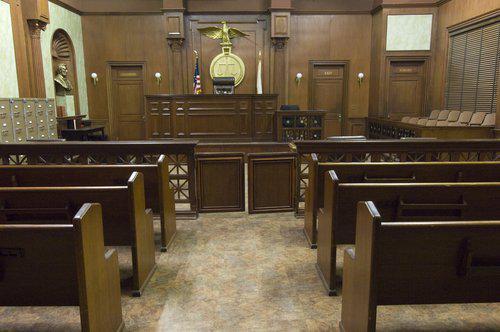 One of the murkiest areas of criminal law is that of self-defense. American law has long recognized the right of people to protect themselves from attackers in certain circumstances, but at the same time courts have been afraid of extending that right too far, citing concerns about vigilante justice and unnecessary violence. Three years ago, the Wisconsin state legislature passed the 2011 Wisconsin Act 94, which laid out the rights of a person to defend themselves in their home, office, or car, a law commonly referred to as the “Castle Doctrine.” However, the defendant in a recent case discovered that when a person pushes that right too far, criminal charges can often result.
One of the murkiest areas of criminal law is that of self-defense. American law has long recognized the right of people to protect themselves from attackers in certain circumstances, but at the same time courts have been afraid of extending that right too far, citing concerns about vigilante justice and unnecessary violence. Three years ago, the Wisconsin state legislature passed the 2011 Wisconsin Act 94, which laid out the rights of a person to defend themselves in their home, office, or car, a law commonly referred to as the “Castle Doctrine.” However, the defendant in a recent case discovered that when a person pushes that right too far, criminal charges can often result.
Self-Defense and the Castle Doctrine
New Challenge to the Informing the Accused Form
 Wisconsin law requires police officers to take steps to inform people accused of operating while under the influence of an intoxicant (OWI). Among these steps is the requirement that police provide a form known as an Informing the Accused from. This form informs a driver that the police would like to test them for alcohol or other intoxicants under Wisconsin's implied consent law. The implied consent law is a law that allows the police to take a chemical test to determine if a person has been operating while under the influence. However, a recent case is challenging the clarity of the Informing the Accused Form in an effort to invalidate a blood test that was taken following a form. The case plays on an inherent ambiguity that exists within the form to argue that it is confusing to defendants.
Wisconsin law requires police officers to take steps to inform people accused of operating while under the influence of an intoxicant (OWI). Among these steps is the requirement that police provide a form known as an Informing the Accused from. This form informs a driver that the police would like to test them for alcohol or other intoxicants under Wisconsin's implied consent law. The implied consent law is a law that allows the police to take a chemical test to determine if a person has been operating while under the influence. However, a recent case is challenging the clarity of the Informing the Accused Form in an effort to invalidate a blood test that was taken following a form. The case plays on an inherent ambiguity that exists within the form to argue that it is confusing to defendants.
Miranda Warning for Defendants in Wisconsin
 The U.S. Constitution provides people who are taken into police custody with a variety of rights, including the right to remain silent and the right to an attorney. However, because of the complex legal nature of these rights, the Supreme Court has required officers to read a short explanation of these rights to people being taken into custody. This warning is known as a Miranda warning because the Court introduced it in the case Miranda v. Arizona.
The U.S. Constitution provides people who are taken into police custody with a variety of rights, including the right to remain silent and the right to an attorney. However, because of the complex legal nature of these rights, the Supreme Court has required officers to read a short explanation of these rights to people being taken into custody. This warning is known as a Miranda warning because the Court introduced it in the case Miranda v. Arizona.
It is important for people in custody to recognize when they are getting their Miranda warning because once they have been informed of their rights they may accidentally waive them. The Miranda warning varies from place to place, but it will generally sound like this: “You have the right to remain silent. Anything you say can and will be used against you in a court of law. You have the right to an attorney. If you cannot afford an attorney, one will be appointed for you. Knowing and understanding your rights as I have read them to you, are you willing to answer my questions without an attorney present.”
White Collar Crime and Fish Shredding
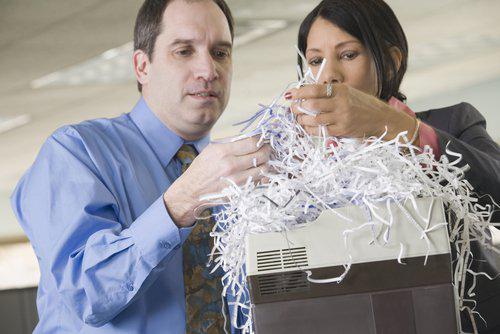 For many people, the mention of white collar crime conjures up images of corporate executives undertaking shady accounting practices and then shredding their paper trail. White collar crime does not normally bring to mind fishermen and fishing regulations, but the U.S. Supreme Court recently agreed to hear a case, Yates v. U.S., that could expand a major law against white collar crime to other arenas. Depending on which way the case comes out, it could have important implications for how the federal government handles criminal law.
For many people, the mention of white collar crime conjures up images of corporate executives undertaking shady accounting practices and then shredding their paper trail. White collar crime does not normally bring to mind fishermen and fishing regulations, but the U.S. Supreme Court recently agreed to hear a case, Yates v. U.S., that could expand a major law against white collar crime to other arenas. Depending on which way the case comes out, it could have important implications for how the federal government handles criminal law.
Yates v. U.S.
The defendant in the case is a fisherman who was out catching red grouper. His boat was stopped and his catch was inspected because it is only legal to catch red grouper above a certain size. The inspector on the boat found fish that were too small, and he ordered the defendant to bring his boat in to shore so that the fish could be seized. During the trip to shore, the defendant destroyed the offending fish and replaced them with others in an attempt to avoid prosecution. Now he has been brought up on charges related to white collar crime and the destruction of evidence, colloquially known as the “anti-shredding law.”
Probable Cause and the Scent of Alcohol
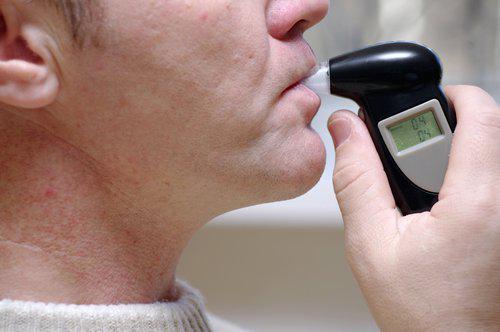 Drunk driving charges can have serious consequences that follow a person for the rest of his or her life. For instance, a person with three or more OWI convictions is subject to a reduced blood alcohol concentration (BAC) standard. Ordinarily, this limit is 0.08, but those with more convictions are subject to a 0.02 limit. This means that even a single drink could put a person over the legal limit.
Drunk driving charges can have serious consequences that follow a person for the rest of his or her life. For instance, a person with three or more OWI convictions is subject to a reduced blood alcohol concentration (BAC) standard. Ordinarily, this limit is 0.08, but those with more convictions are subject to a 0.02 limit. This means that even a single drink could put a person over the legal limit.
This reduced BAC limit leads to a unique issue with regard to searches and preliminary breath tests for alcohol. Police need some sort of “probable cause” in order to request a preliminary breath test. Normally, this standard is somewhat strenuous for the police, but the Wisconsin Supreme Court has ruled in the case State v. Goss that the mere scent of alcohol is enough to test a person with three or more convictions for OWI.

